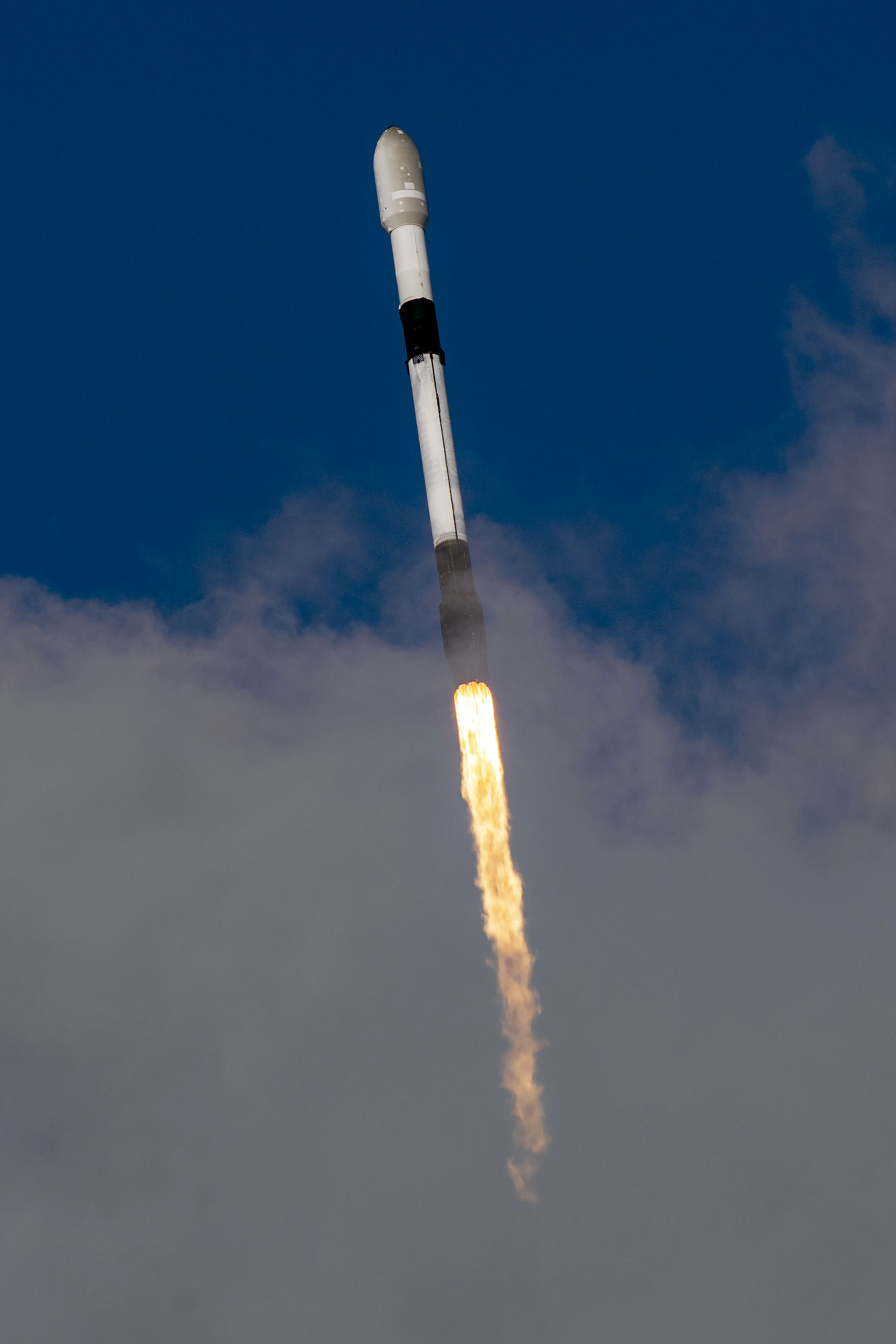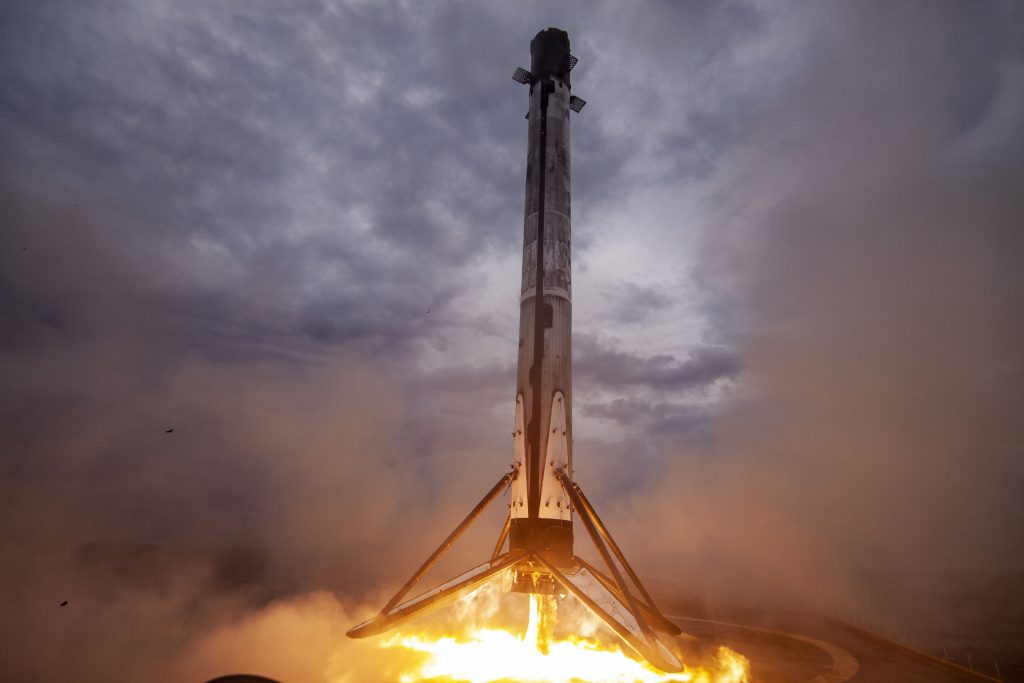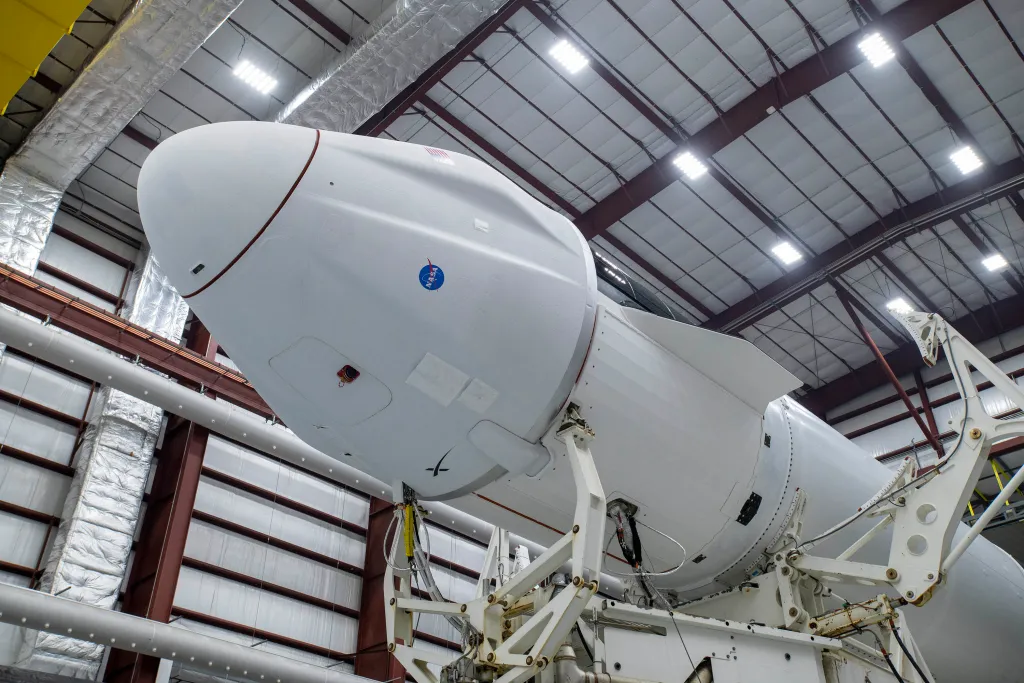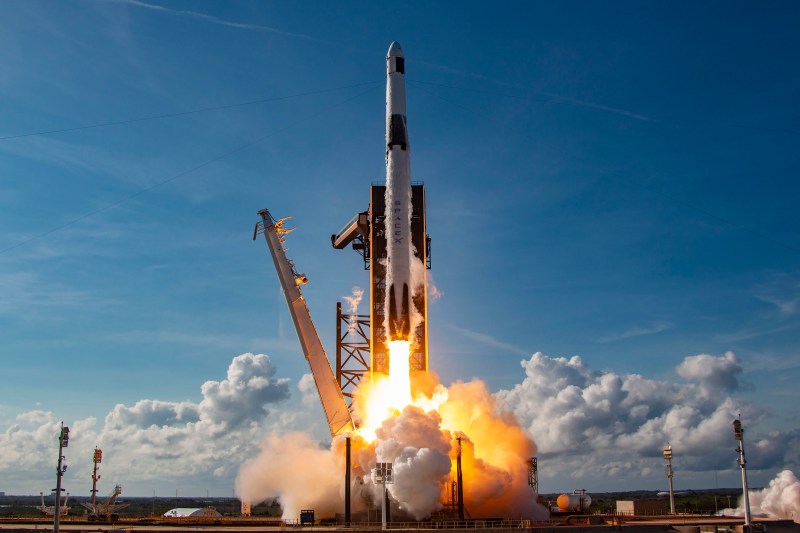Featured Image: SpaceX
Lift Off Time | March 15, 2023 – 00:30 UTC March 14, 2023 – 20:30 EDT |
|---|---|
Mission Name | Dragon CRS-2 SpX-27, a Commercial Resupply Service mission to the International Space Station (ISS) |
Launch Provider | SpaceX |
Customer | National Aeronautics and Space Administration (NASA) |
Rocket | Falcon 9 Block 5 Booster 1073-7; 35.96-day turnaround |
Launch Location | Launch Complex 39A (LC-39A), Kennedy Space Center, Florida, USA |
Payload mass | Not Specified |
Where did the spacecraft go? | Dragon C209-3 rendezvoused with the ISS, ~400 km low Earth orbit (LEO) at a 51.66° inclination |
Did they attempt to recover the first stage? | Yes |
Where did the first stage land? | Autonomous Spaceport Drone Ship A Shortfall of Gravitas |
Did they attempt to recover the fairings? | There are no fairings on the Dragon 2 |
Were these fairings new? | There are no fairings on the Dragon 2 |
This was the: | – 210th Falcon 9 launch – 144th Falcon 9 flight with a flight-proven booster – 150th re-flight of a booster – 16th re-flight of a booster in 2023 – 178th booster landing – 104th consecutive landing (a record) – 17th launch for SpaceX in 2023 – 62nd SpaceX launch from LC-39A – 3rd flight of Dragon 2 C209 – 36th orbital launch attempt of 2023 (33rd successful orbital launch) |
Where to watch | Once available, an official livestream can be found here |
What’s All This Mean?
Dragon CRS-2 SpX-27 (CRS-27) is a Commercial Resupply Service mission that headed to the International Space Station (ISS) to deliver cargo. SpaceX was awarded this mission by NASA back in 2016 and launched it on its Falcon 9 Block 5 rocket using a Cargo Dragon 2, C209-3, the third flight for this Dragon capsule. The rocket lifted off from Launch Complex 39A, at the Kennedy Space Center in Florida. CRS-27 was the seventh flight for SpaceX under NASA’s CRS Phase 2 contract.
Cargo Dragon C209-3 successfully docked with the ISS at 11:32 UTC, on March 16, 2023.
CRS-2 SpX-27 – CRS-27
The International Space Station (ISS) is a large international collaboration between nations across the globe. Operating for over 20 years, the orbital laboratory needs regular visits from cargo vehicles to deliver new experiments, supplies like clothing, food, and water, and eventually act has a garbage disposal for used items.
Currently, three different vehicles from three different entities have the capability to carry cargo to the ISS. Northrup Grumman’s Cygnus spacecraft launched by NASA, ROSCOSMOS’s Soyuz Progress spacecraft, and SpaceX’s Cargo Dragon spacecraft.
Cygnus recently launched a resupply mission to the ISS with the S.S. Sally Ride vehicle on their CRS-2 NG-18 mission from Wallops Island, Virginia, USA. The last Progress launch was in early February on the Progress MS-22 mission. The last SpaceX resupply mission was in late November of 2022, CRS-2 SpX-26.
CRS-27 Research Payloads
Every resupply mission hosts dozens of experiments and technology demonstrations. On CRS-27, these range from vegetation experiments to new solar arrays for the ISS to provide greater power consumption. These research experiments can range from NASA-funded experiments to private companies and universities. Due to the amount of research on CRS-27, only select payloads will be discussed in-depth here. If you’d like to learn more, check out and explore NASA’s or the National Lab’s websites.
BFF-Meniscus
BFF-Meniscus is an experiment that evaluates the feasibility of using the ISS’ BioFabrication Facility to print a meniscus. The investigation consists of two phases. Phase I is considered a proof of concept and attempts to print a meniscus with a combination of Techshot and 4D Bio3 Bio-Inks. 4D Bio3 will provide a support syringe, while Techshot will provide Bio-Inks that are already on the ISS.
Phase II will then attempt to print a meniscus tissue sample with 4D Bio3 cells and inks only. The prints of phase II will be completed in test print cassettes and tissue cassettes and will after successful completion be transferred to the ADvanced SEParations (ADSEP) facility. There the samples will be cultured for 14 days before phase II concludes with the tissue being fixed. Later, the samples will be returned to the experiments principal investigator (PI) for further analysis.
Possible applications of this investigation would be addressing musculoskeletal injuries in space and on Earth, as well as improving the understanding and limits of bio-fabrication and the cells response to microgravity. This could be beneficial for future tissue-engineering solutions for aforementioned injuries.
Cellular Mechanotransduction by Osteoblasts in Microgravity
The Cellular Mechanotransduction by Osteoblasts in Microgravity project will investigate how being in a microgravity environment contributes to the loss of bone mass. The project uses a device that will measure the stiffness of human osteoblasts, which are cells involved in the formation of bone. It is believed that microgravity affects the structures of cells, reducing the stiffness in bone cells. This is similar to what we see with the effect of aging on cells on Earth. Osteoporosis is a condition that causes bones to become increasingly weak and brittle as people age. Fragile bones are more susceptible to fractures from low-impact forces and falling.
Previous studies have shown that microgravity can induce accelerated bone loss; however, researchers are still determining how this happens. In this project, the research team will study a group of proteins and their effect on osteoblasts in microgravity.
This project will have applications both in space and back on Earth. The research will help develop countermeasures for astronauts who experience bone loss in space. Back on Earth, the study will improve prevention and treatment for osteoporosis and other age-related conditions.

Effect of Microgravity on Drug Responses Using Engineered Heart Tissues
The Effect of Microgravity on Drug Responses Using Engineered Heart Tissues project will study the effect of microgravity on heart function. Muscles such as the heart weaken in microgravity environments as they experience a very different gravitational load from that on Earth. This difference in gravity can induce abnormalities in cells, like that seen in atrophy, a disease in which heart muscles are weakened and may lead to heart failure. These types of responses to the long-term microgravity environment are like heart diseases on Earth but on a much faster timeline.
This project builds on a previous study that showed that exposure to microgravity for extended time periods caused noticeable changes in heart cell function, which could lead to long-term impacts. In this study, researchers will investigate whether engineered heart tissue experiences atrophy in microgravity and whether FDA-approved medications could counter this. This project’s results can be used to develop new drugs to treat heart conditions on Earth.
Screening and Batch Manufacturing of Complex Biotherapeutics in Microgravity
Another experiment on CRS-27 is the Screening and Batch Manufacturing of Complex Biotherapeutics in Microgravity. It will examine the crystallization process of multiple biotherapeutics, such as monoclonal antibodies. Microgravity aids in producing diffraction quality crystals. Analyzing the structure of those crystals can help in understanding the biotherapeutic’s properties. This better understanding can then lead to reduced production cost, enable formulations of biotherapeutics that are more stable, and can be administered more easily.
Structure and Stability of Foams and Emulsions
The Structure and Stability of Foams and Emulsions project will investigate the properties and performance of foams and emulsions. The study will use particles with different shapes and surface roughness to stabilize foams and emulsions. The unique microgravity environment of the ISS enables the examination of the microstructures of foams and emulsions without the influence of gravity-related factors. This means the project will show a physical phenomenon that has been predicted by models but has never actually been observed – that is the optimal packing structure of dry foams. The project will also investigate if eco-friendly nanoparticles can be used as a stabilizer for foams and emulsions.
What Is Falcon 9 Block 5?
The Falcon 9 Block 5 is SpaceX’s partially reusable two-stage medium-lift launch vehicle. The vehicle consists of a reusable first stage, an expendable second stage, and, when in payload configuration, a pair of reusable fairing halves.
First Stage
The Falcon 9 first stage contains nine Merlin 1D+ sea-level engines. Each engine uses an open gas generator cycle and runs on RP-1 and liquid oxygen (LOx). Each engine produces 845 kN of thrust at sea level, with a specific impulse (ISP) of 285 seconds, and 934 kN in a vacuum with an ISP of 313 seconds. Due to the powerful nature of the engine, and the large amount of them, the Falcon 9 first stage is able to lose an engine right off the pad, or up to two later in flight, and be able to successfully place the payload into orbit.
The Merlin engines are ignited by triethylaluminum and triethylborane (TEA-TEB), which instantaneously burst into flames when mixed in the presence of oxygen. During static fire and launch the TEA-TEB is provided by the ground service equipment. However, as the Falcon 9 first stage is able to propulsively land, three of the Merlin engines (E1, E5, and E9) contain TEA-TEB canisters to relight for the boost back, reentry, and landing burns.
Second Stage
The Falcon 9 second stage is the only expendable part of the Falcon 9. It contains a singular MVacD engine that produces 992 kN of thrust and an ISP of 348 seconds. The second stage is capable of doing several burns, allowing the Falcon 9 to put payloads in several different orbits.
For missions with many burns and/or long coasts between burns, the second stage is able to be equipped with a mission extension package. When the second stage has this package it has a grey strip, which helps keep the RP-1 warm, an increased number of composite-overwrapped pressure vessels (COPVs) for pressurization control, and additional TEA-TEB.

Falcon 9 Booster
The booster supporting the CRS-27 mission is B1073-7. As the name implies, the booster has supported six previous missions.
| B1073’s missions | Launch Date (UTC) | Turnaround Time (Days) |
| Starlink 4-15 | May 14, 2022 – 20:40 | N/A |
| SES-22 | June 29, 2022 – 21:04 | 46.02 |
| Starlink 4-26 | August 10, 2022 – 02:14 | 41.22 |
| Starlink 4-35 | September 24, 2022 – 23:32 | 45.89 |
| HAKUTO-R Mission 1 | December 11, 2022 – 07:38 | 77.34 |
| Amazonas Nexus | February 07, 2023 – 01:32 | 57.75 |
| Dragon CRS-2 SpX-27 | March 15, 2023 – 01:30 | 35.96 |
Following launch, the Falcon 9 booster will conduct three burns. These burns aim to softly touch down the booster on the Autonomous Spaceport Drone Ship (ASDS) A Shortfall of Gravitas .

Cargo Dragon 2
The CRS-27 mission will be the third mission to the ISS for Cargo Dragon C209-3. Like its fellow Dragons C209 will hopefully return to Earth after serving its time on the ISS bringing back experiments and other cargo. It will then be refurbished and used on another mission in the future.
| C209’s missions | Launch Date (UTC) | Turnaround Time (Days) |
|---|---|---|
| Dragon CRS-2 SpX-22 | June 03, 2021 | N/A |
| Dragon CRS-2 SpX-24 | December 21, 2021 | 201 |
| Dragon CRS-2 SpX-27 | March 15, 2023 | 449 |
Cargo Dragon 2 is 8.1 m (26.6 ft in) in height and 3.7 meters (12 feet) in diameter. Compared to the original Cargo Dragon, the upgraded spacecraft can and will automatically dock on the ISS. The old version had to be manually berthed by Canadarm2.

The Cargo Dragon 2 shares a similar design with the Crew Dragon spacecraft intended to carry astronauts to the ISS and back to Earth. However, there are some differences. The Cargo Dragon 2 does not have SuperDraco abort engines, nor a life support system since there will be no human passengers on board. In the pressurized section, the seats and crew displays have been swapped for cargo racks. The environmental control system has been also reduced both in size and complexity.
Overall, the CRS-27 mission’s success criteria will be successful deployment of the Cargo Dragon 2 to the dedicated orbit, its docking to the ISS, and recovery of the booster.
CRS-27 Countdown
All times are approximate
| HR/MIN/SEC | EVENT |
|---|---|
| 00:38:00 | SpaceX Launch Director verifies go for propellant load |
| 00:35:00 | RP-1 (rocket grade kerosene) loading begins |
| 00:35:00 | 1st stage LOX (liquid oxygen) loading begins |
| 00:16:00 | 2nd stage LOX loading begins |
| 00:07:00 | Falcon 9 begins pre-launch engine chill |
| 00:05:00 | Dragon transitions to internal power |
| 00:01:00 | Command flight computer to begin final prelaunch checks |
| 00:01:00 | Propellant tanks pressurize for flight |
| 00:00:45 | SpaceX Launch Director verifies go for launch |
| 00:00:03 | Engine controller commands engine ignition sequence to start |
| 00:00:00 | Falcon 9 liftoff |
LAUNCH, LANDING, AND DEPLOYMENT
All times are approximate
| HR/MIN/SEC | EVENT |
|---|---|
| 00:01:12 | Max Q (moment of peak mechanical stress on the rocket) |
| 00:02:27 | 1st stage main engine cutoff (MECO) |
| 00:02:30 | 1st and 2nd stages separate |
| 00:02:38 | 2nd stage engine starts |
| 00:02:42 | 1st stage boostback burn begins |
| 00:03:15 | 1st stage boostback burn complete |
| 00:05:45 | 1st stage entry burn begins |
| 00:05:59 | 2nd stage engine cutoff (SECO-1) |
| 00:07:06 | 1st stage landing burn begins |
| 00:07:33 | 1st stage landing |
| 00:08:37 | Dragon separates from 2nd stage |
| 00:11:49 | Dragon nosecone open sequence begins |





